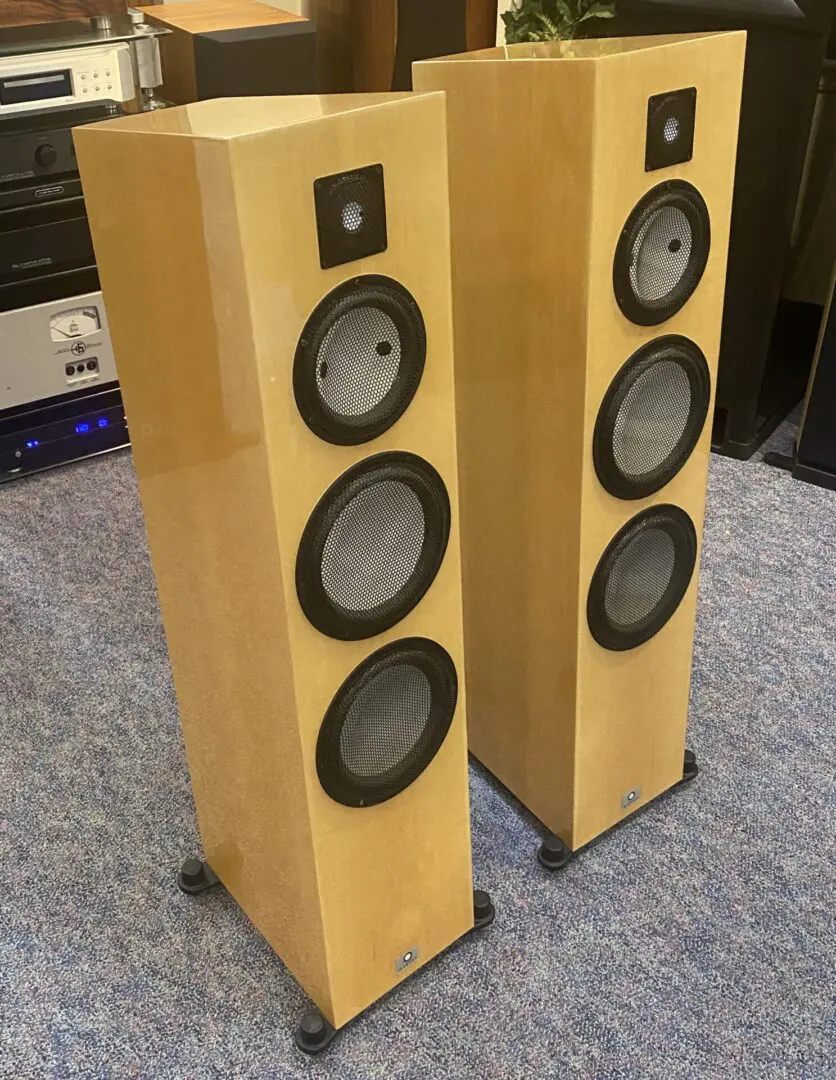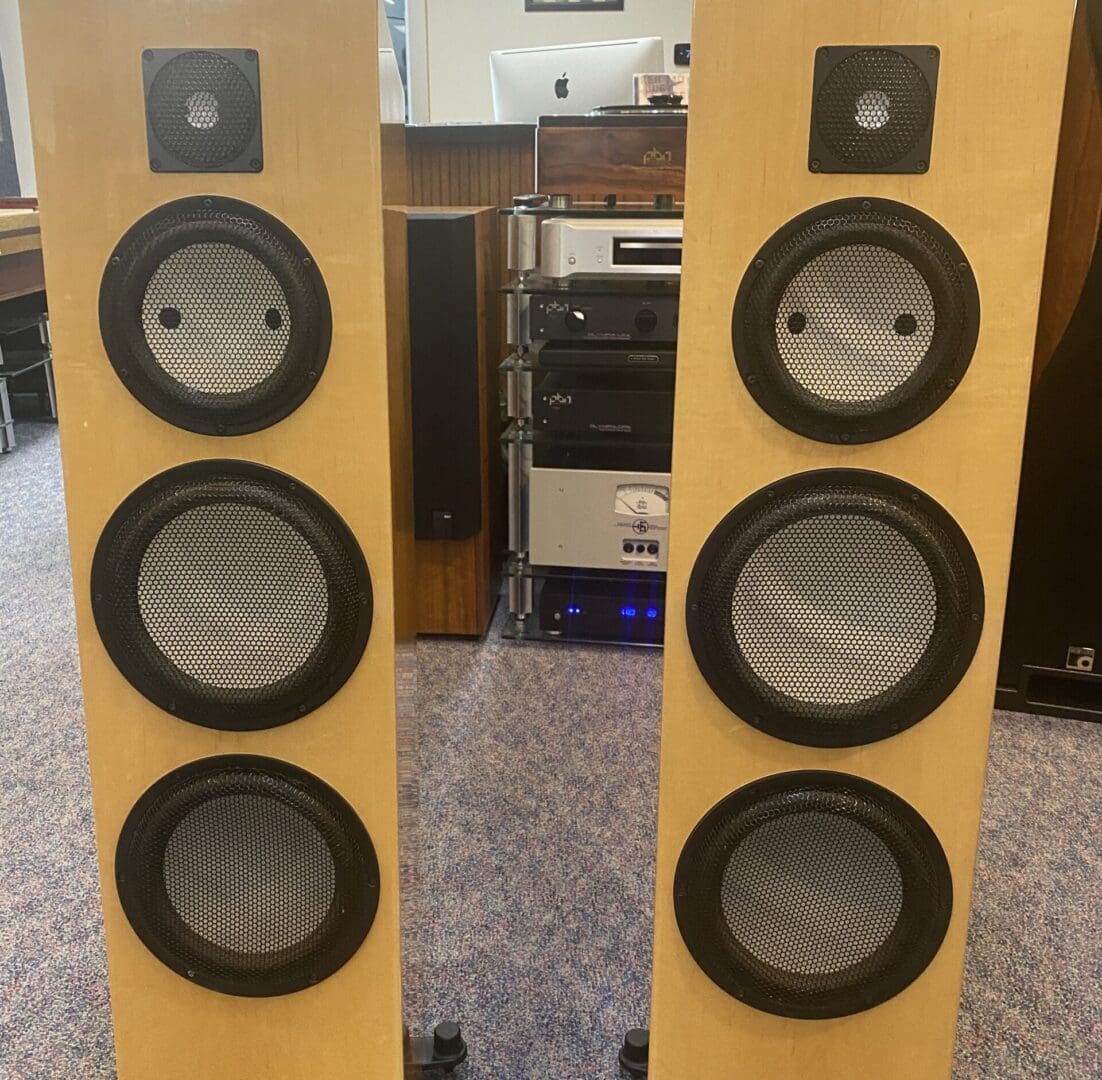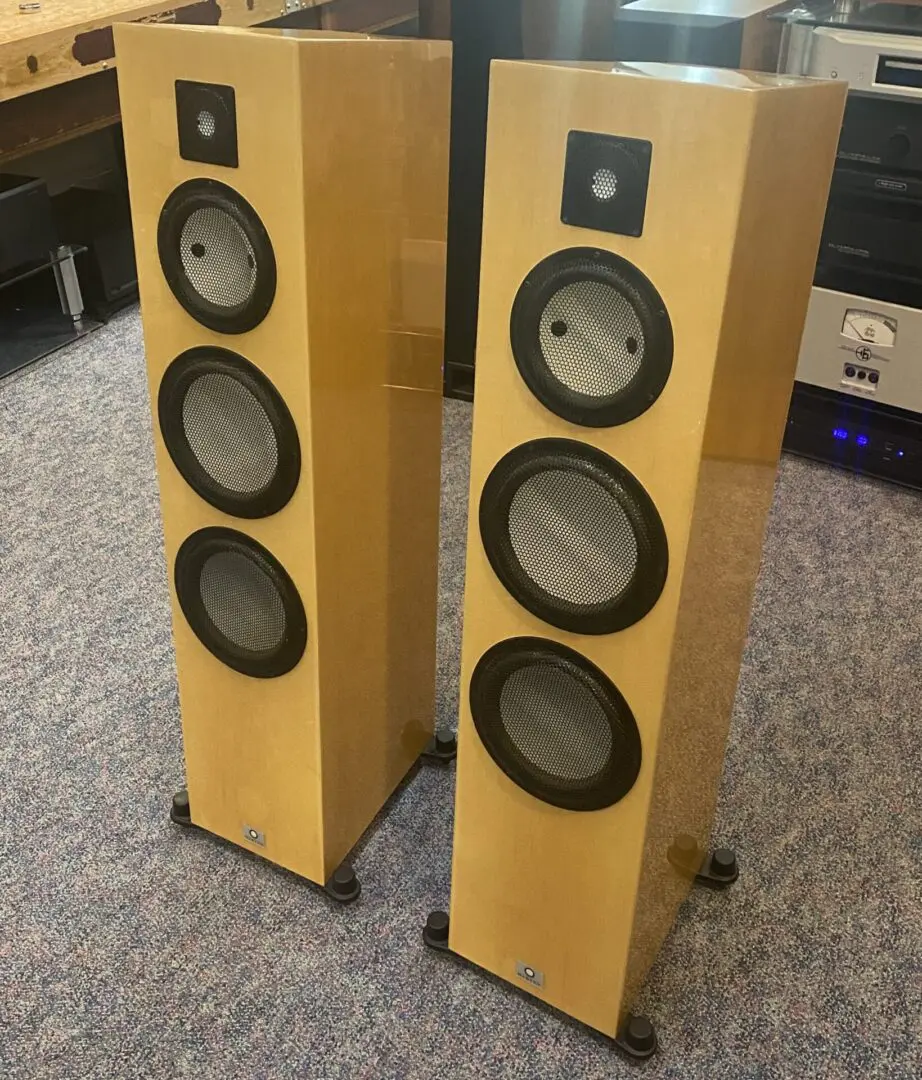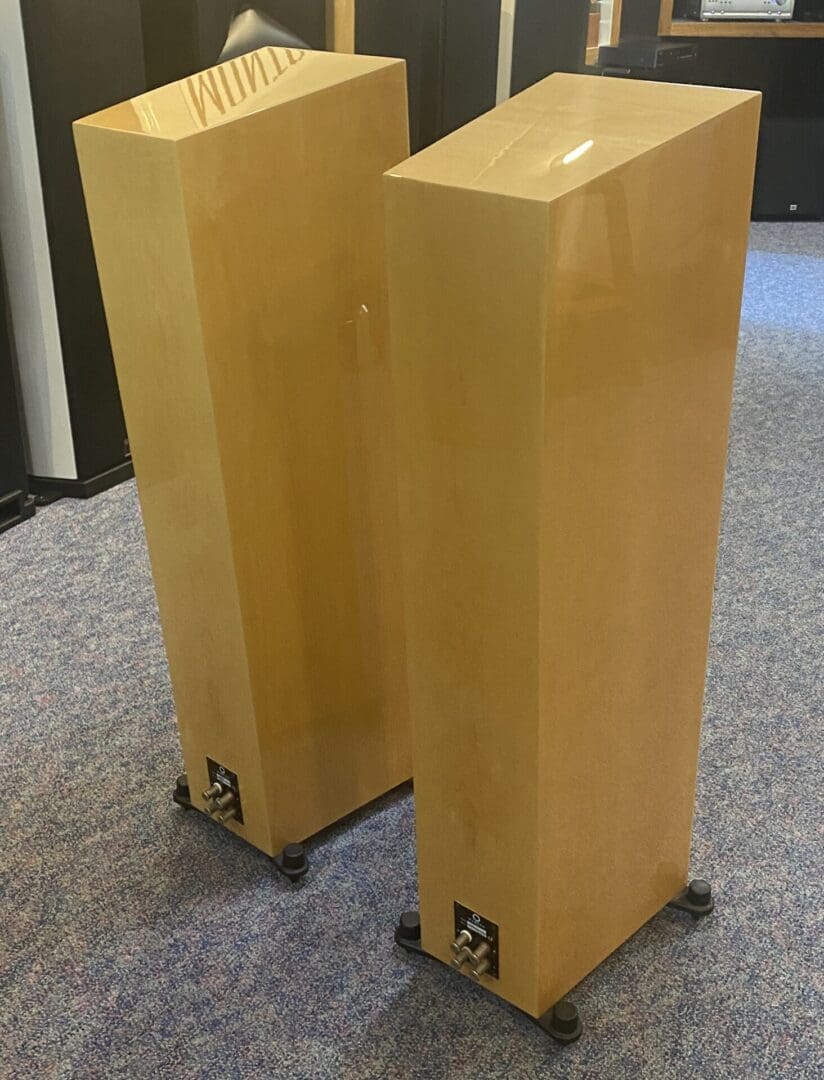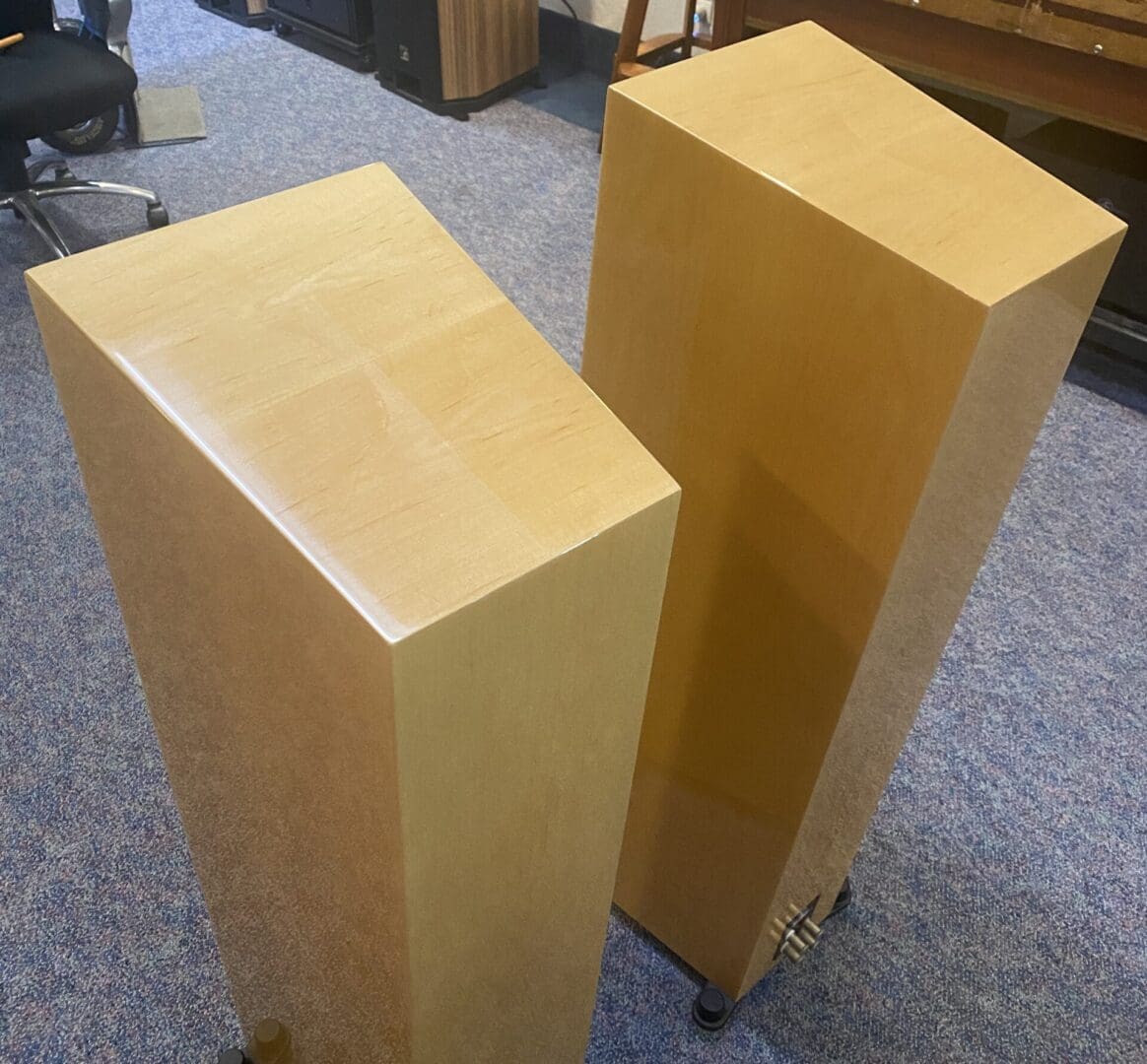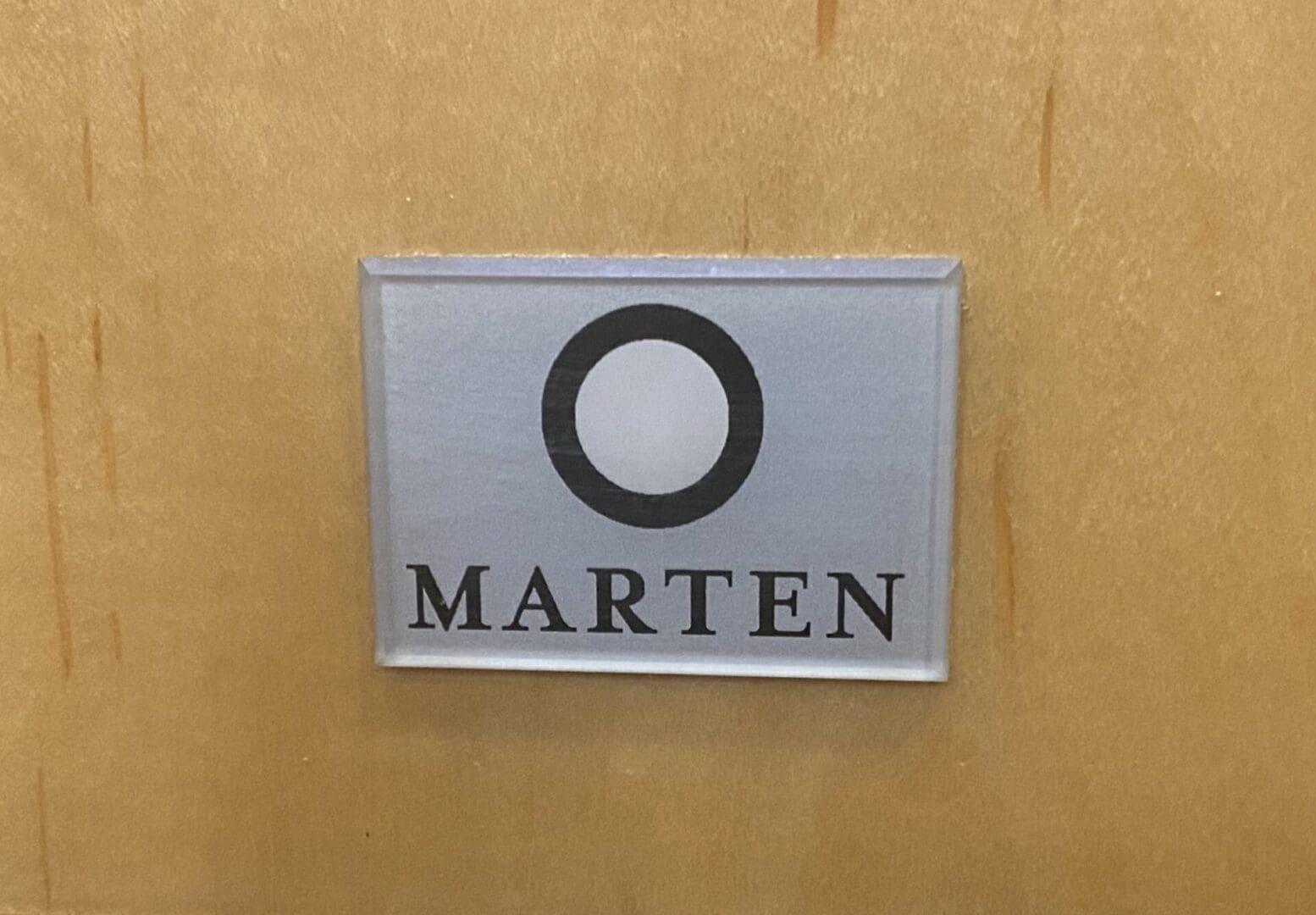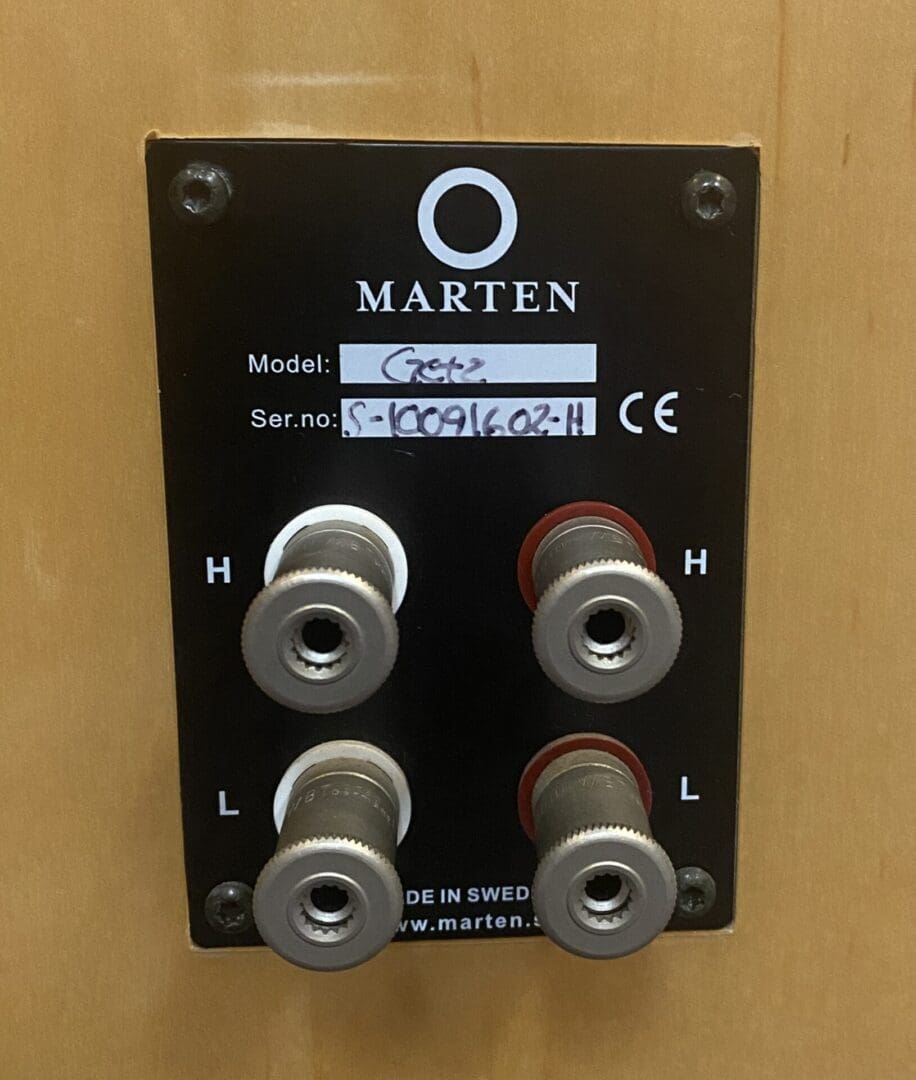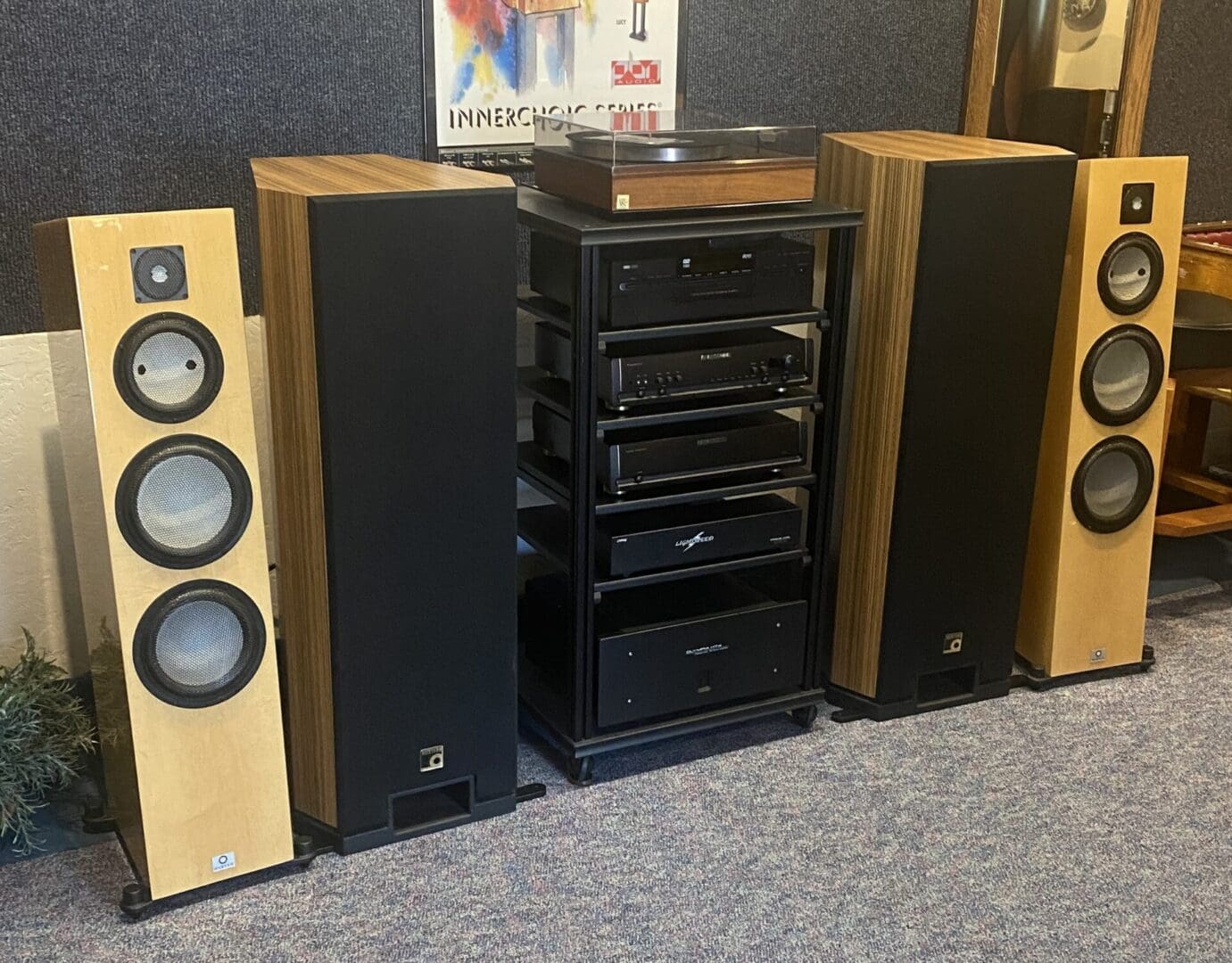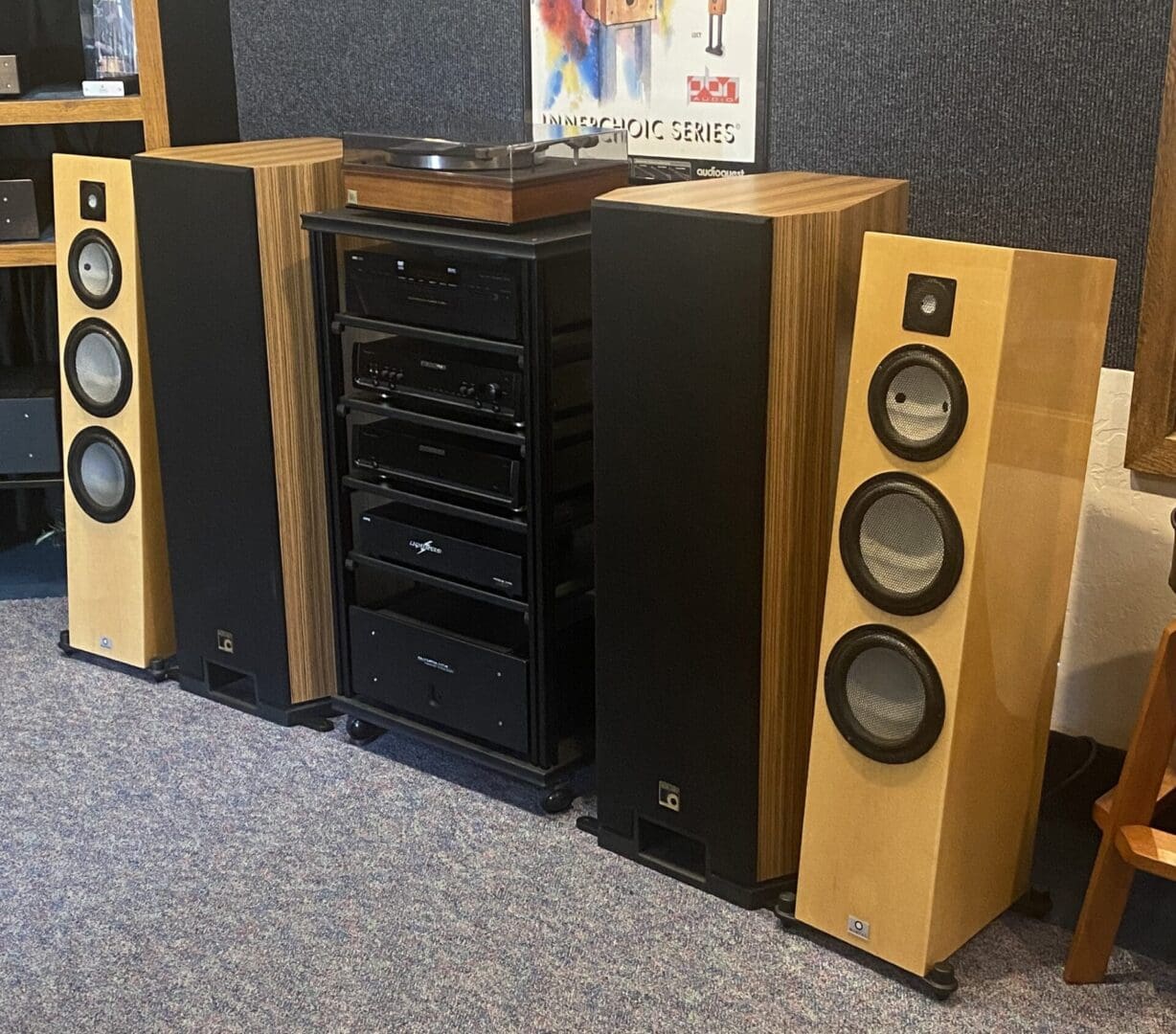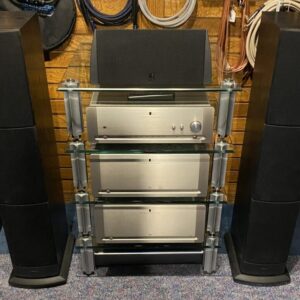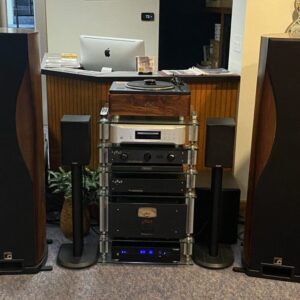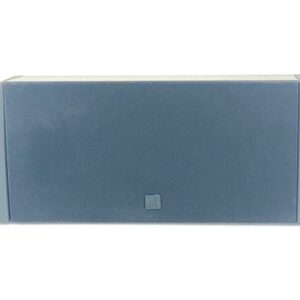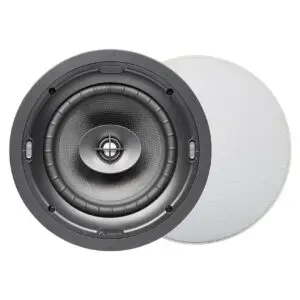Marten Getz Loudspeakers
Original price was: $20,000.00.$8,000.00Current price is: $8,000.00.
TAS 208 Three-way passive radiator Loud speakers Made in Sweden
Drive units: 9” ceramic , 9” aluminum (passive), 7” ceramic, 1” ceramic
Frequency range: 30Hz–40kHz +-3dB
Sensitivity: 87dB/2.83V
Impedance: 6 ohm
Dimensions: 9.8” x 45.7” x 13.8”
Weight: 73 lbs.
Type: Trade
Condition: 8/10 — Very Good Condition. Clean all over
Includes: Spikes and Double Boxes
Product Description
The Marten Getz loudspeaker is a three-way dynamic-driver floorstander. Its debut marks the completion of the four-model Heritage Series from the company that hails from the land of ABBA, Volvo, and Ingrid Bergman. Marten, known for bestowing the names of famous jazz icons on its products, positions the Getz between the larger Bird and smaller Miles 3. At 45.7” tall, the Getz time-aligns its drivers with a gentle, backward leaning rake and is beautifully finished. The transducers are sourced from Germany’s Accuton and they will likely be familiar to Kharma and Lumen White devotees. They employ ceramic membranes formed from aluminum oxides. These diaphragms are as thin as a human hair, featherlight and unencumbered by dust caps or phase plugs. They are known for extremely high rigidity. Unlike typical cone diaphragms, they will not deform when subjected to an errant finger touch; they will shatter. Hence the wire-mesh covers protecting them, which obviate the need for a grille cloth. The midrange drivers add resonance damping via laser-drilled holes in the ceramic cone. Introduced for the Getz is a new 9” aluminum passive radiator which Marten considers a sonically satisfying middle ground between the tuned, open port of a bass reflex enclosure and the fully sealed enclosure of an acoustic suspension design.
The crossover is second-order (12dB/octave slopes at 400Hz and 2.9kHz), built from premium components that include Teflon-ring-core coils (for bigger values than 3.0mH), polypropylene capacitors from Mcap and MIT, and non-inductive resistors from Mundorf. Sensitivity is 87dB with a nominal impedance of 6 ohms but dropping no lower than 4 ohms. Internal wiring is Jorma Design throughout. Twin pairs of high-quality WBT binding posts are standard.
Cabinet construction was flawless to the hand and the eye. Built of specially selected, 23mm thick, veneered MDF, the enclosure has heavily braced non-parallel sides that make it all but immune to a knuckle-rap resonance test. The supplied pointed footers are mounted on heavy brackets that extend beyond the side panels of the speaker, giving the Getz a wider more stable stance.
Now I Getz It
Sonically the Getz actually startled me at times. But not in the way its looming piano-black countenance might imply. Yes, it had loads of output, but there are plenty of other loudspeakers of this specification that can out-slam it in bass extension or macro dynamics, if that’s your goal. The Getz, in my view, has a different set of priorities. And early on it became clear that paramount on that list is a midrange purity, pace, speed, and transparency.
The Getz’s savvy inner game also reveals timbral distinctions, so that each snap of a snare drum or rim shot becomes utterly distinct from the previous strike. Musical cues, especially pure acoustic ones like the timbre of the talking drums during Jennifer Warnes’ “Way Down Deep,” reveal a complex combination of spring and skin that is utterly convincing. And amidst all this low-level resolution, the Getz never forgets the importance of rendering a nicely scaled soundstage. Instruments are well focused and stable in their positions. Orchestral layering was very good.
The overall character of the Getz is a cooler and drier one, somewhat consistent with my experience with ceramic drivers. Consistent, too, is the speaker’s speed, detail, and coherence. It doesn’t reveal any spurious box resonances. Tonally the presence range emerges with just a shade of added forwardness which lightly outlines the edges of images, violin for example. With drivers of lesser quality this might have been more of an issue, but the Getz inverted tweeter never sacrifices its intrinsic sweetness and bloom for “manufactured” details.
Transient response and mid-to-upper frequency dynamics are uniformly excellent, but the Getz’s pace is even better—a quickness and responsiveness akin to the fast-twitch muscle fibers of a gifted athlete. Acoustic guitars, harpsichord, high-hat rhythm-marking, cymbal crashes, basically any instrument where the transient report is sharply encountered simply materialize in and around the Getz with definitive clarity. Ceramic drivers are noted for this quick-launch trait, but I think equal credit is probably owed to the cabinet. It doesn’t sponge up transient speed and micro-information. The Getz has seemingly shed residual enclosure artifacts to the extent that images seem to materialize in the vicinity of the cabinet as if the box itself were a mere afterthought—existing only to suspend the sound at an accurate level, like a stage that exists to support actors and allow them to be seen by the audience.
The Marten Getz is quite a musical and communicative loudspeaker, not without its own accent, but persuasive in the manner it conveys intimacy, pace, and transparency—in other words, the lifeblood of the music. It’s a solid contender deserving a special place on every audiophile’s short list.

